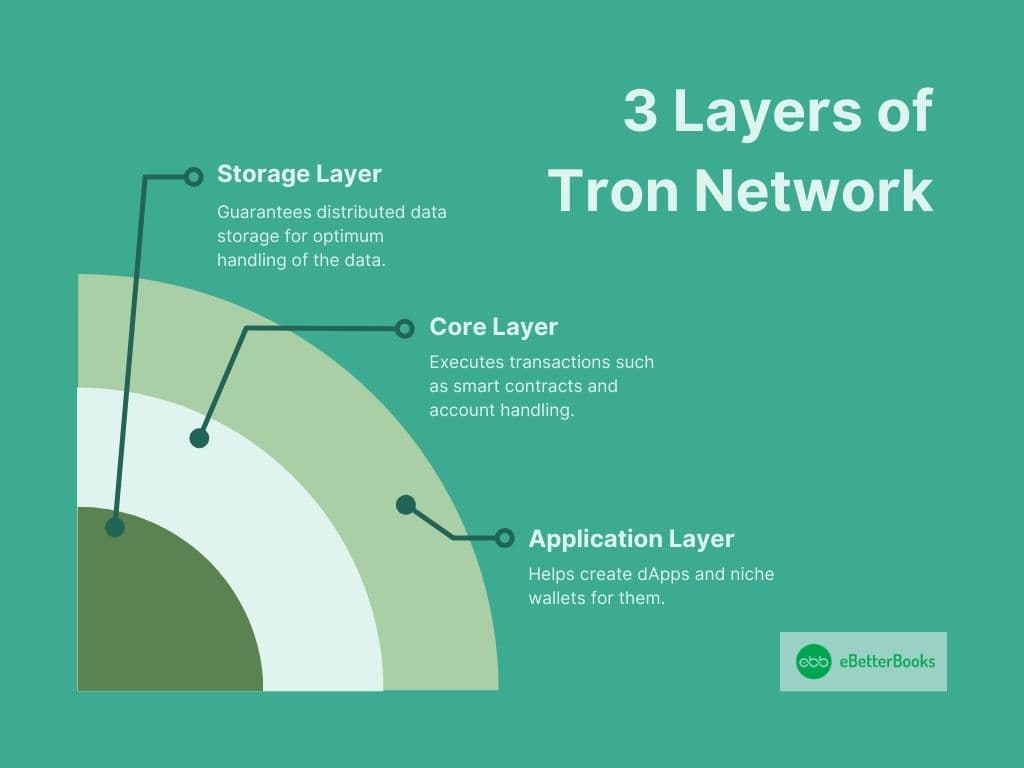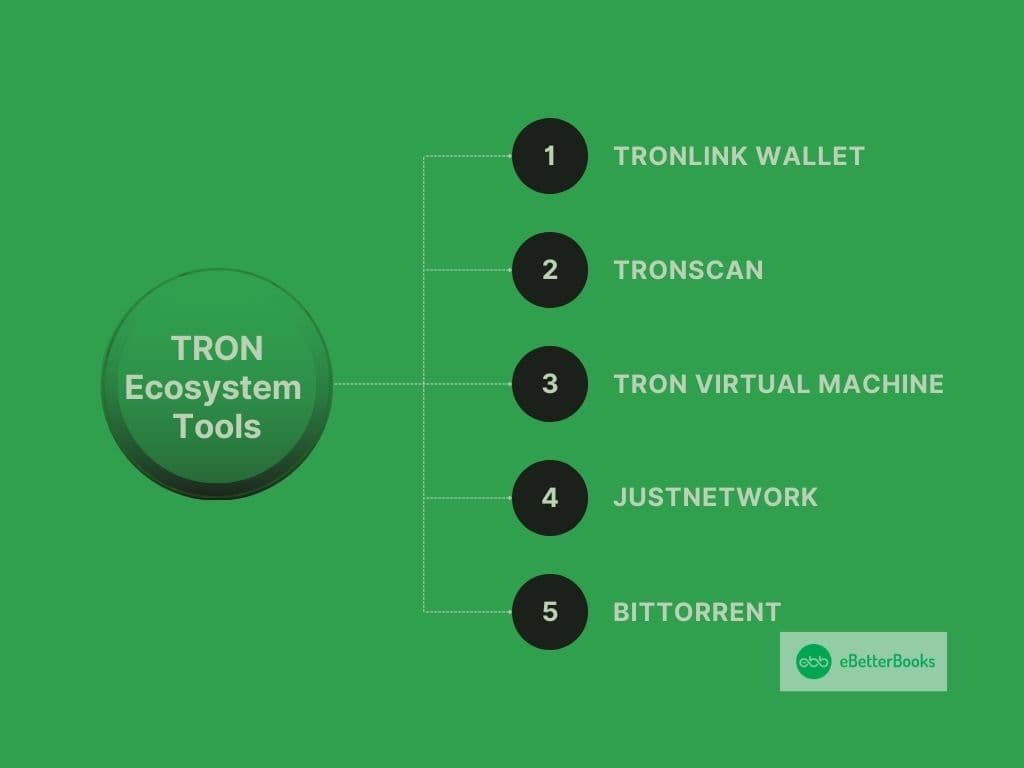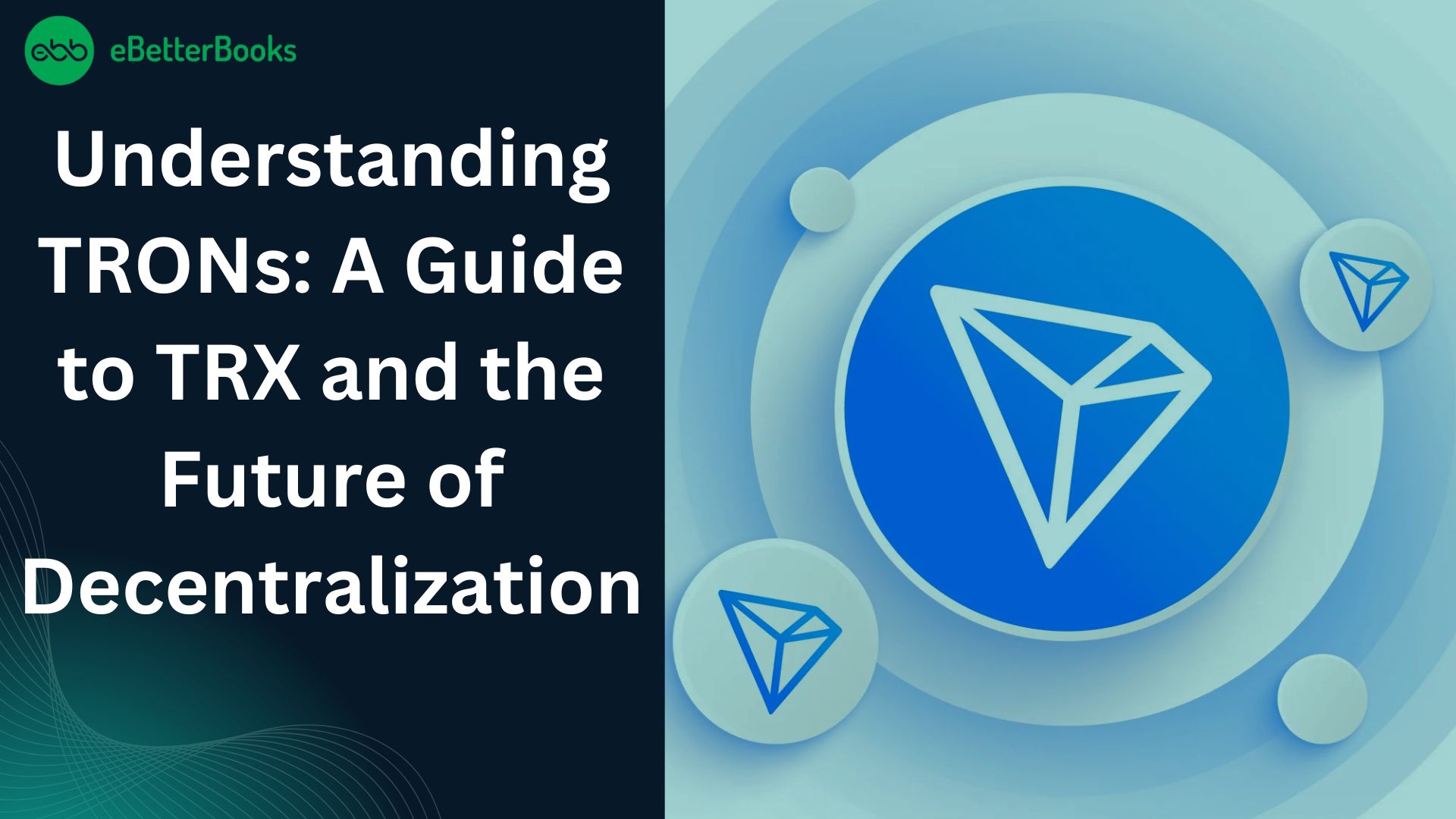What is TRON (TRX)?

TRON is a blockchain-based decentralized Internet operating system that aims to advance the decentralization of the Internet and its infrastructure. Founded in 2017, it is designed to support content creators and developers by offering them a comprehensive base that eliminates middlemen, thus cutting costs and increasing profits.
However, at the core of Tron’s functionality is its token—TRX or Tronix. TRX can be employed to compensate transaction charges, obtain governance rights by staking, and reward participants. The Tron community’s roadmap encompasses the transition to a new decentralized web or Web3, where the rights to control our data do not lie in the hands of large corporations.
TRON Foundation and History
The Tron Foundation was founded in Singapore in 2017 by Justin Sun, a technology pioneer who focuses on blockchain technology. The foundation leads the development of Tron and encourages its usage worldwide.
Tron founder Justin Sun is also the founder of Peiwo, an app that aims to be the Asian Snapchat. Tron started with its ICO exercise in September 2017 when it launched its token at $0.001 and successfully sold one billion tokens to raise $70 million.
Launched on the Ethereum platform, Tron moved to its mainnet in June 2018 and remains a key developmental stage for the blockchain.
Notable Timeline: 2017-2024
- 2017: Justin Sun launched the Tron Foundation and achieved an ICO price of $70 million.
- 2018: Launched its Mainnet departed from Ethereum and also rolled out the Tron Virtual Machine (TVM).
- 2019: The company also obtained BitTorrent and started using BitTorrent Token (BTT).
- 2020: Integrated with DeFi by opening JustSwap and JustLend platforms.
- 2021: Working with Samsung Galaxy Store, the incorporation of TRON dApps, to reach its users around the world.
- 2022: Launched Decentralized USD (USDD), a new stablecoin that runs on the Tron network and uses an algorithm.
- 2023: Had more than 2 billion transactions and was involved in an SEC lawsuit over outstanding securities law infringements.
- 2024: Demanded to have the lawsuit filed by the SEC dismissed and concurrently strengthening the decentralized network and upgrading the DeFi facilities.
How Does the Tron Blockchain Work?
The Tron blockchain architecture aims to provide high transactional throughput and cost efficiency and create intelligent apps. DPoS is used as its consensus model, which helps realize scalability and resource efficiency.
Here’s how it works:
Consensus Mechanism: Tron runs DPoS in which 27 of the Super Representatives (SRs) are selected by TRX holders to process the transactions and add blocks to the chain. This system guarantees high transaction speed with little energy intake compared to PoW systems.
Three-Layer Architecture:
- Application Layer: Helps create dApps and niche wallets for them.
- Core Layer: Executes transactions such as smart contracts and account handling.
- Storage Layer: Guarantees distributed data storage for optimum handling of the data.
Transaction Speed and Cost: Tron operates constantly over 2000 TPS with nearly zero transaction fees, making it one of the most efficient platforms for dApp consumers and producers.
Smart Contracts: TVM, as a free-standing blockchain, supports language Solidity, which makes the deployment of smart contracts and the function of Apps easier.
This structure, however, places Tron in a position to become a scalable, user-friendly blockchain solution.
TRON Ecosystem
The TRON ecosystem includes multiple scalability and adoption projects, such as its dApp sidechain and Sun Network. TRON incorporates features like dApps, smart contracts cryptocurrency wallets, and delegated proof-of-stake (DPoS) consensus. TRON hosts the largest circulating supply of USD Tether (USDT) stablecoins, surpassing the Ethereum network in early 2021.
TRON operates its own network through a community-decentralized autonomous organization (DAO). The TRON DAO is the decentralized management system adopted in the TRON network, where community decisions on upgrades, proposals, and ecosystem management take place.
Key Elements

Here’s a breakdown of key elements:
- TRX Cryptocurrency: The utility token that also pays fees for transactions, staking, and participating in governance.
- dApps: Tron is a decentralized platform that supports hundreds of thousands of decentralized applications including gaming, DeFi, NFTs, and more.
- BitTorrent (BT): It is open, decentralized, peer-to-peer file sharing that utilizes blockchain. It speeds up sharing while offering incentives to sharers.
- Tron Wallets: Hardware wallets like the TronLink wallet, and dApp wallets support TRX and all the dApps.
- Decentralized Finance (DeFi): JustSwap is a decentralized exchange, and JustLend is a lending DeFi application. Tron has extended its support for these applications.
- Tron DAO: An Ethereum-based collage that envisions an organization that operates fully autonomously by the decision of the members of the public.
Tron is highly focused on scalability and open integration in its ecosystem, which encourages both innovation and industry adoption.
TRON Protocol
The Tron Protocol is the fundamental concept of Tron. It is built as a blockchain that offers efficiency, scalability, and dependability. It supports a Delegated Proof of Stake (DPoS) consensus that makes it faster and less energy-intensive than PoW system consensus.
Transactions on the Tron Blockchain are maintained by a consortium of Super Representatives (SR) that are voted in by TRX holders who have locked their stake in the form of Tron Power. There are 27 top-voted Super Representatives and 100 Super Representative Candidates.
The hierarchy of SR and SR Candidates is readjusted every 6 hours based on the number of votes they receive from Tron Power holders.
Key Features of the Protocol

- High Throughput: Tron can handle over 2000 TPS, which is much higher than many rivals, such as Ethereum.
- Low Latency: Thanks to completely low transaction confirmation time, Tron guarantees smooth functioning for both, dApps and users.
- Smart Contract Functionality: In particular, it retains the capability of enabling smart contracts to automatically execute decisions between different parties.
- Compatibility: Another feature based on interoperability is Tron’s protocol’s ability to use Ethereum computational platforms to host developers’ dApps.
The Protocol demonstrates its pragmatic approach addressed to software developers and merchants through speedy and inexpensive blockchain interactions.
TRON Network Architecture
TRON operates a Turing-complete virtual machine called the TRON virtual machine (TVM). Smart contracts on the TRON network are interoperable with the TRON TRC-20 token standard.
Tron’s network architecture is multi-layered and scalable. It is also as secure and reliable as possible. It consists of three main layers.
Layers of TRON Network

- Application Layer: This layer allows developers to develop dApps and construct private wallets. The following smart contracts are conducted through the TVM.
- Core Layer: The core layer processes all operations, including smart contract execution and account management. The platform is friendly to programming languages such as Java and Solidity to make them more accessible to developers.
- Storage Layer: Tron’s storage is done using distributed storage technology for both the blockchain and the state network storage. The system provides the means to manage data and data retrieval for the network applications efficiently.
Sourcing also, Tron rewards participation in the network using three tokens: TRX, BTT, and JST, which the network uses to enhance utility.
TRON Use Cases
Tron blockchain is versatile, and it can be applied in several ways, which makes it an important blockchain for decentralization. The TRON network can accommodate up to 2000 transactions per second, making it a scalable and fast platform for online media.
Its primary use cases include:
- Decentralized Applications (dApps): Tron dApps are compatible with a wide range of industries, including gaming, finance, and entertainment. Developers begin building on Tron because of its high scalability and low cost per transaction model.
- Content Monetization: Tron is strong with decentralized content creation. They put less intermediary between a content creator and consumer, meaning content creators make more profit. For instance, downloading-containing sites such as BitTorrent apply Tron to incentivize users to upload files.
- Decentralized Finance (DeFi): DeFi refers to financial applications provided by Tron that include lending, borrowing, and Staking. Successful DeFi projects such as JustSwap and JustLend function in the Tron environment.
- Tokenization: Unlike other cryptocurrencies, organizations can easily create their token on the Tron blockchain for purposes like crowdfunding and customer rewards.
- NFTs and Gaming: Tron supports NFTs and blockchain games, enabling users to freely own and transact assets.
TRX Tokens
The native asset of the Tron platform is a TRX (Tronix) utility token, which is used in all transactions within the system and to access digital content, and services on the TRON blockchain.
TRX can be used to participate in the TRON ecosystem, including voting for Super Representatives. Its circulating supply is 86.43 B TRX.
Key Functions of TRX
- Transaction Fees: Users pay for transactions using TRX, which is relatively cheaper than other blockchains.
- Staking and Governance: People can lock their TRX to participate in the network’s decision-making through the voting of Super Representatives.
- Incentives: These tokens are automatically given as incentives to validators and various users to participate in running the TRX network.
With a total supply of about 100 billion tokens, TRX ensures currency longevity and avoids inflation. Given its versatility, TRX is applicable in almost all forms of virtual and real financial transactions, from personal tokens and micropayments to the enterprise level.
TRON ETFs
A Tron ETF is a financial instrument that invests in Tron’s own TRX token or related blockchain-based investments. It helps investors access Tron’s future without having to buy Tron TRX.
Key Features of Tron ETFs
- Ease of Access: Unlike many cryptocurrencies, which offer decentralized wallets and exchanges, Tron ETFs can be bought and sold through standard stock brokerage platforms.
- Diversification: Since Tron is included in some crypto ETFs with other cryptocurrencies or blockchain companies, the risk associated with such ETFs is diversified.
- Regulation: If Tron ETFs are available for investment, they are linked to regulated financial markets, which gives traditional traders additional protection.
Although there are still few Tron-specific products such as ETFs, the increasing number of financial instruments related to crypto shows the potential of Tron ETFs on the financial market.
TRON Ecosystem Tools
To enhance its functionality and accessibility, Tron provides various tools and centralized platforms within its ecosystem:

- TronLink Wallet: A safe storage place and point of contact for TRX and all digital applications built on smart contracts. The wallet is also compatible with web as well as mobile platforms.
- TronScan: It is the official Block Explorer for Tron, which helps track transactions, tokens, and smart contracts on The network.
- Tron Virtual Machine (TVM): It is a solitary, compact virtual computing environment where developers can execute smart contracts.
- JustNetwork: A set of tools for DeFi, including a decentralized exchange- JustSwap, a lending space- JustLend, and a stablecoin environment- JustStable.
- BitTorrent: An online sharing of files with additional benefits from blockchain technology.
These tools make Tron an easily accessible platform for developers and end-users, which is bound to increase usage among the two.
TRON Partnerships and Collaborations
Tron has forged significant partnerships and collaborations to expand its reach and use cases:
- BitTorrent: In 2018, BitTorrent was acquired by Tron to incorporate the functionality of blockchain for faster, incentivized file sharing.
- Samsung: TRON has integrated with Samsung Blockchain Keystore and is now the only made-in-China blockchain supported by Samsung. The Samsung Galaxy Store now features compatibility with Tron and its blockchain, so users can easily launch apps.
- Poloniex: A crypto exchange that has listed Tron Tokens, thus, increasing liquidity for the TRX and other Tron-based tokens.
- APENFT: The partnership level can be described as cooperation in creating and using NFTs in the Tron network.
TRON has partnered with other companies to expand its ecosystem and improve its services. Such partnerships demonstrate Tron’s readiness to build partnerships that broaden the use of the blockchain within industries.
TRON Price and Market Performance
Since its launch, TRX has registered tremendous swings in trading volume and its price that can be associated with market conditions and progress within the blockchain industry. The current price of TRX is US$0.1611, with a 24-hour trading volume of $450.2 M.
TRX is listed on over 130 exchanges and has a total market cap of $13,938.17 million. 154.99 million accounts hold TRX, and the 24-hour transaction volume is $452.07 million.
Key Factors Influencing TRX Price
- Market Demand: This is why the TRX upsurges overall with the increased adoption of Tron’s ecosystem support.
- Technological Updates: Any development and enhancement of the network will be a bonus to the valuation of TRX.
- Partnership Announcements: This implies that collaboration with major industries hit the Tron price higher.
- Market Trends: They pointed out that Tron price depends on general cryptocurrency trends, such as the fluctuating Bitcoin price.
Despite the risks and volatility of the current market cap, Tron has remained one of the leading blockchain networks and one of the top 20 cryptocurrencies by market cap.
Security and Scalability
Security and scalability are the pillars of Tron’s blockchain infrastructure:
Security: Tron uses the Delegated Proof of Stake consensus mechanism, which reduces the possibility of a malicious attack. Its architecture also protects smart contract execution and users’ information.
Scalability: Tron, with its current TPS of over 2000, is one of the fastest blockchains in the market. This high throughput can facilitate the proper running of a dApp and also reduce network traffic.
Concerning security and scalability, Tron guarantees the platform’s stable performance for developers and users.
Conclusion
TRON is a decentralized blockchain-based operating system that aims to advance the decentralization of the Internet and its infrastructure. It is ranked as the 27th largest coin in the world and has an extraordinary ecosystem, helpful tools, and promising collaborations with blockchain systems.
TRON has a strong ecosystem with multiple scalability and adoption projects, such as its dApp sidechain and Sun Network. Essentially, because of its focus on scaling, affordability, and security, TRON has created its niche and become a vital firm to Web3’s future, which makes it interesting to follow for blockchain communities and investors.
FAQs
What is TRX and How is it used in the Tron Network?
TRX (Tronix) is the native cryptocurrency of the Tron blockchain. It is used to pay transaction fees, participate in governance by staking, and reward network participants. TRX also enables decentralized applications (dApps) and is a vital part of the Tron ecosystem.
How does Tron Ensure Scalability and Low Transaction Costs?
Tron uses the Delegated Proof of Stake (DPoS) consensus mechanism, which involves a voting system to select “Super Representatives” who validate transactions. This allows for high transaction speeds (over 2000 TPS) and low fees, making it an efficient platform for dApps.
What are the Key Use Cases of Tron?
Tron supports various use cases, including decentralized applications (dApps), decentralized finance (DeFi), content monetization, gaming, NFTs, and tokenization. It is especially useful for developers looking for a scalable and cost-effective blockchain platform for building applications.

